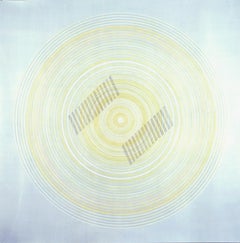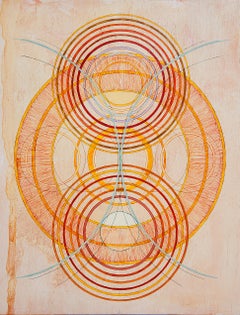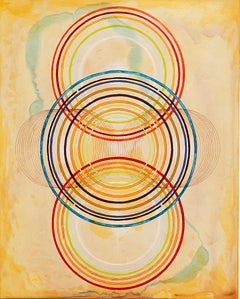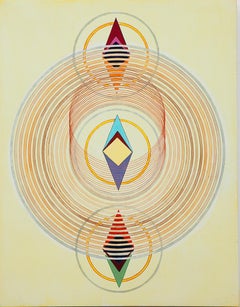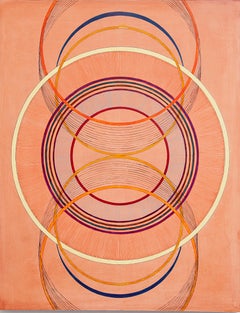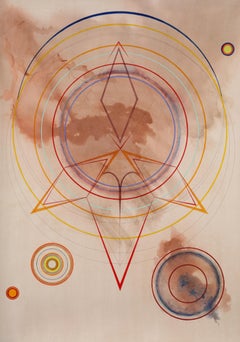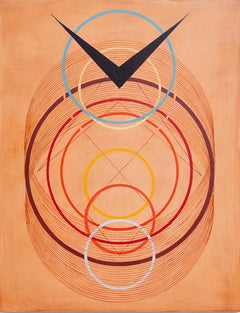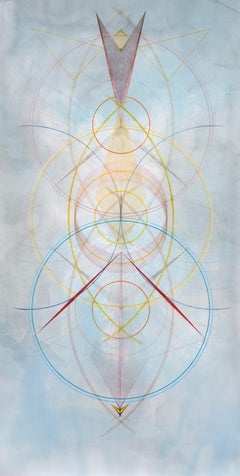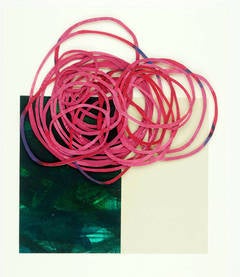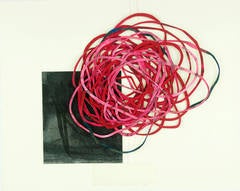Jamestown Ri
2010s Symbolist Abstract Paintings
Paper, Ink, Handmade Paper, Pigment
2010s Abstract Geometric Abstract Paintings
Gesso, Ink, Wood Panel
2010s Abstract Geometric Abstract Paintings
Gesso, Ink, Wood Panel
2010s Suprematist Abstract Paintings
Gesso, Ink, Wood Panel
2010s Abstract Geometric Abstract Paintings
Gesso, Ink, Wood Panel
2010s Abstract Geometric Abstract Paintings
Pigment, Paper, Ink, Handmade Paper
2010s Abstract Geometric Abstract Paintings
Gesso, Ink, Wood Panel
2010s Suprematist Abstract Paintings
Paper, Ink, Handmade Paper, Pigment
Recent Sales
Contemporary Mixed Media
2010s Suprematist Abstract Paintings
Gesso, Ink, Wood Panel
2010s Symbolist Abstract Paintings
Gold
Tayo Heuser for sale on 1stDibs
Tayo Heuser was born in Washington D.C. but raised in North, East and West Africa. She returned to the United States to attend college at the Rhode Island School of Design. As a child in Tunisia, she wandered the Roman ruins in Carthage admiring the vast expanses of the Roman marketplace and baths along with the Roman mosaics still embedded into the ground. The Great Mosque of Kairouan with its endless horseshoe arches and Islamic tiles formed an indelible visual memory of geometric design, thus, beginning her interest in geometry entailed in creating patterns that would continue to inform her artwork. Her voyages through the Sahara exposed her to the night sky and an infinite horizon. The other end of the spectrum from the stillness of the desert would be in the Ivory Coast. Heuser would revel in the vibrant color of the textiles worn by the Ivorian people along with the varied and abundant vegetation. Her identity transcends her geography and political borders. Heuser's art rests in a meditative space throughout her process and gains insight into an unconscious world where colors and geometric forms emerge. Her paintings are like portals in that they represent a world of infinite possibilities that allow for reflectivity and timeless tranquility. They create a heightened perception of the world we live in, delving into untouched levels of reality. Heuser considers her paintings as passageways between her interior and exterior worlds akin to a spiritual excavation. She addresses the central theme of cosmic balance between light and darkness, spirit and matter. Her paintings embody energies that are released during these moments of profound solitude and quietude. Heuser had a yearlong solo long exhibition at the Phillips Collection in Washington D.C. Recent solo exhibitions (2018) were at The UMass Dartmouth Gallery, MA, The Jamestown Art Center in RI (2016) and the Roger Williams University Gallery in Bristol, RI (2014). Group exhibitions include The Weatherspoon Museum, the Rhode Island School of Design Museum, the University Art Museum at Long Beach California and the Chazen Museum of Art. Her work has been exhibited internationally, most recently at the Chateau de Fernelmont in Belgium. Heuser was awarded residencies with the BAU nchorInstitute, the Women's Studio Workshop and a travel grant from Roger Williams University to study papermaking in Japan. She was a Louis Comfort Tiffany Award nominee. Heuser’s work is in the permanent collection of The RISD Museum, Providence RI, The Weatherspoon Museum, Greensboro, NC, The Hammer Museum Los Angeles, CA, and The Phillips Collection, Washington D.C. Other collections include the American Embassy in Jeddah, Saudi Arabia, the Leeds Foundation Philadelphia, PA, the Werner Kramarsky Collection NYC. Heuser’s work has been featured in publications including, The Los Angeles Times, The Boston Globe, Art New England, Artscope, The Boston Herald, La Libre Magazine, Le Soir and the Washington Post.
Finding the Right Abstract-paintings for You
Bring audacious experiments with color and textures to your living room, dining room or home office. Abstract paintings, large or small, will stand out in your space, encouraging conversation and introducing a museum-like atmosphere that’s welcoming and conducive to creating memorable gatherings.
Abstract art has origins in 19th-century Europe, but it came into its own as a significant movement during the 20th century. Early practitioners of abstraction included Wassily Kandinsky, although painters were exploring nonfigurative art prior to the influential Russian artist’s efforts, which were inspired by music and religion. Abstract painters endeavored to create works that didn’t focus on the outside world’s conventional subjects, and even when artists depicted realistic subjects, they worked in an abstract mode to do so.
In 1940s-era New York City, a group of painters working in the abstract mode created radical work that looked to European avant-garde artists as well as to the art of ancient cultures, prioritizing improvisation, immediacy and direct personal expression. While they were never formally affiliated with one another, we know them today as Abstract Expressionists.
The male contingent of the Abstract Expressionists, which includes Jackson Pollock, Willem de Kooning and Robert Motherwell, is frequently cited in discussing leading figures of this internationally influential postwar art movement. However, the women of Abstract Expressionism, such as Helen Frankenthaler, Lee Krasner, Joan Mitchell and others, were equally involved in the art world of the time. Sexism, family obligations and societal pressures contributed to a long history of their being overlooked, but the female Abstract Expressionists experimented vigorously, developed their own style and produced significant bodies of work.
Draw your guests into abstract oil paintings across different eras and countries of origin. On 1stDibs, you’ll find an expansive range of abstract paintings along with a guide on how to arrange your wonderful new wall art.
If you’re working with a small living space, a colorful, oversize work can create depth in a given room, but there isn’t any need to overwhelm your interior with a sprawling pièce de résistance. Colorful abstractions of any size can pop against a white wall in your living room, but if you’re working with a colored backdrop, you may wish to stick to colors that complement the decor that is already in the space. Alternatively, let your painting make a statement on its own, regardless of its surroundings, or group it, gallery-style, with other works.
